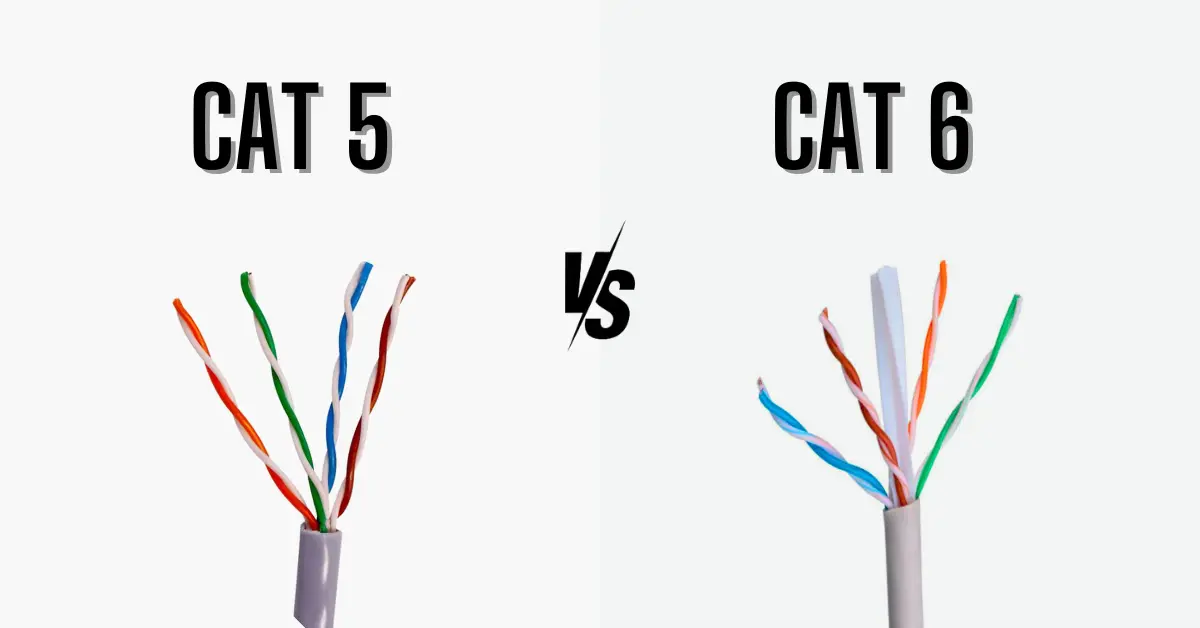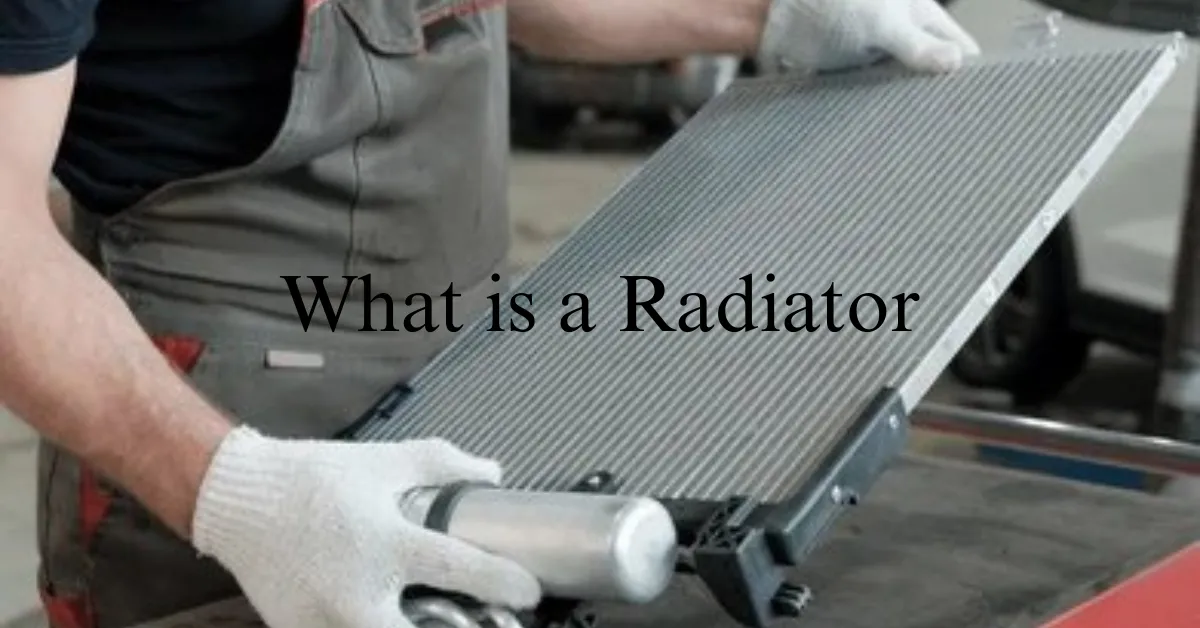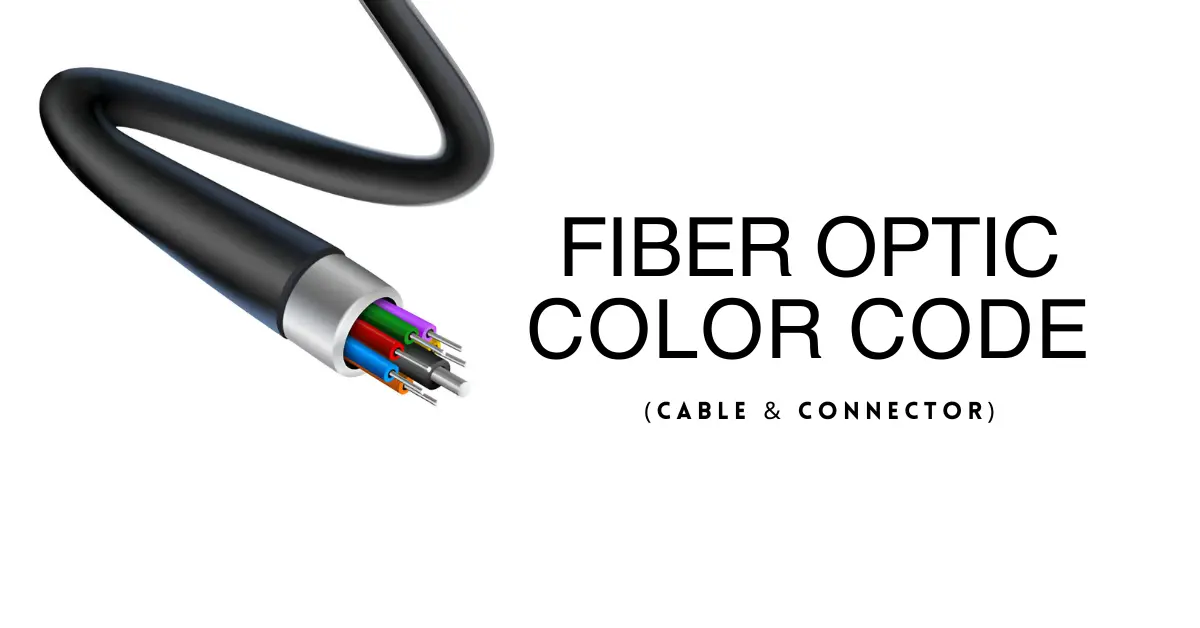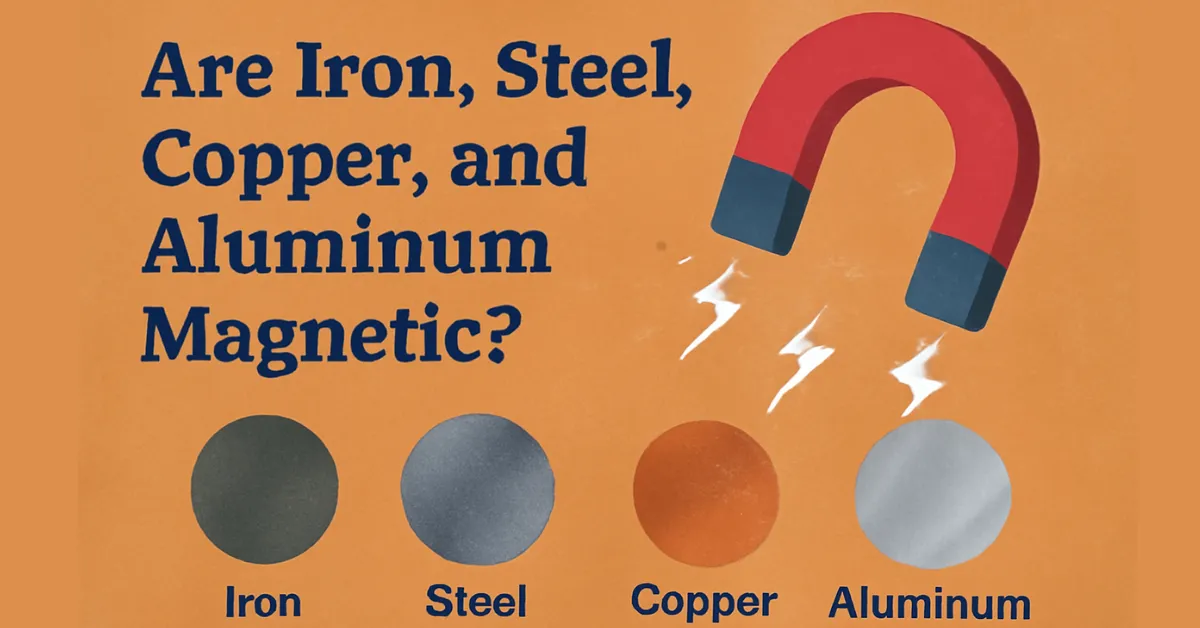Cat 5e vs Cat 6 Ethernet Cable | Speed, Performance & Uses
When it comes to setting up a reliable home or office network, choosing the right Ethernet cable can be a daunting task. With options like Cat5e and Cat6, it’s easy to feel overwhelmed by the technical jargon and specifications.
This blog post will guide you through the differences between Cat 5e vs Cat 6, helping you make an informed decision that best suits your networking needs.
What is CAT5e?

CAT5e, which stands for Category 5 Enhanced, is an improved version of the older CAT5 cable. It’s designed for Gigabit Ethernet speeds and offers better performance with reduced crosstalk. CAT5e cables are typically used for network installations in homes and small businesses. They are backward-compatible with Cat5 cables and can support up to 100 meters in length.
Cat5e cables suit most standard networking tasks, including Internet browsing, streaming, and file transfers. They are often used in home networks, office setups, and small business environments. It’s important to follow proper Ethernet cable wiring techniques to ensure optimal performance with Cat5e cables.
Also, make sure not to confuse cat5e with cat5. If interested, do understand the difference between Cat 5 vs Cat6 cables.
What is CAT6?

Cat6, or Category 6, is a newer and more advanced Ethernet cable than Cat5e. It is designed to support higher performance and can handle up to 10 Gigabit Ethernet speeds over a maximum length of 55 meters. Cat 6 cables have stricter specifications for crosstalk and system noise, which makes them ideal for high-speed and high-frequency applications.
Cat 6 cables are recommended for environments that require fast and stable internet connections, such as data centers, large office networks, and industrial applications. They are also suitable for future-proofing home networks to accommodate increasing internet speeds and bandwidth demands.
CAT 5e vs CAT 6: Key Differences
Bandwidth
Cat5e cables typically support bandwidths of up to 100 MHz. This bandwidth capacity is sufficient for everyday tasks like web browsing, streaming, and file sharing, providing a stable and reliable connection for most home and small office networks.
Cat 6 cables, on the other hand, can handle bandwidths of up to 250 MHz. This higher bandwidth capacity allows for faster data transmission and better performance, making Cat 6 cables ideal for environments that require high-speed and high-frequency applications.
Speed
CAT5e cables can support network speeds of up to 1 Gbps. This speed is adequate for standard applications such as internet browsing, streaming, and online gaming, ensuring smooth and efficient data transfer.
Cat 6 cables support speeds of up to 10 Gbps over shorter distances (up to 55 meters). This makes Cat6 cables suitable for data-intensive tasks, large file transfers, and high-speed internet connections, providing a significant boost in performance compared to Cat5e.
Crosstalk and Interference
Crosstalk occurs when signals from adjacent cables interfere with each other, disrupting data transmission. Cat5e cables have improved resistance to crosstalk compared to Cat5, offering better protection and more reliable data transfer for standard applications.
Cat 6 cables offer even better protection against crosstalk and interference due to their tighter twists and enhanced shielding. This results in a more stable and reliable connection, especially in environments with high levels of electromagnetic interference.
|
Feature |
Cat5e |
Cat6 |
|
Bandwidth |
100 MHz |
250 MHz |
|
Speed |
Up to 1 Gbps |
Up to 10 Gbps |
|
Crosstalk Resistance |
Improved |
Enhanced |
|
Interference Protection |
Moderate |
High |
|
Visual Differences |
Thinner, flexible |
Thicker, rigid |
|
Maximum Length |
100 meters (1 Gbps) |
55 meters (10 Gbps), 100 meters (1 Gbps) |
|
Price |
More affordable |
More expensive |
|
Installation |
Easier |
Challenging |
|
Compatibility |
Standard RJ45 |
Standard RJ45, hardware verification needed |
|
Home Networks |
Cost-effective |
Future-proofing |
|
Office Networks |
Small to medium |
Large, industrial |
|
Durability |
Reliable |
More durable |
|
Future-Proofing |
Current needs |
Future demands |
|
Environmental Impact |
Proper disposal |
Eco-friendly |
|
Sustainability |
Varies by manufacturer |
Increasing focus |
|
Emerging Technologies |
Limited compatibility |
Better suited for future advancements |
|
5G and Wi-Fi 6 |
Adequate support |
Enhanced support |
|
IoT Compatibility |
Sufficient |
More reliable |
Physical Characteristics and Maximum Length
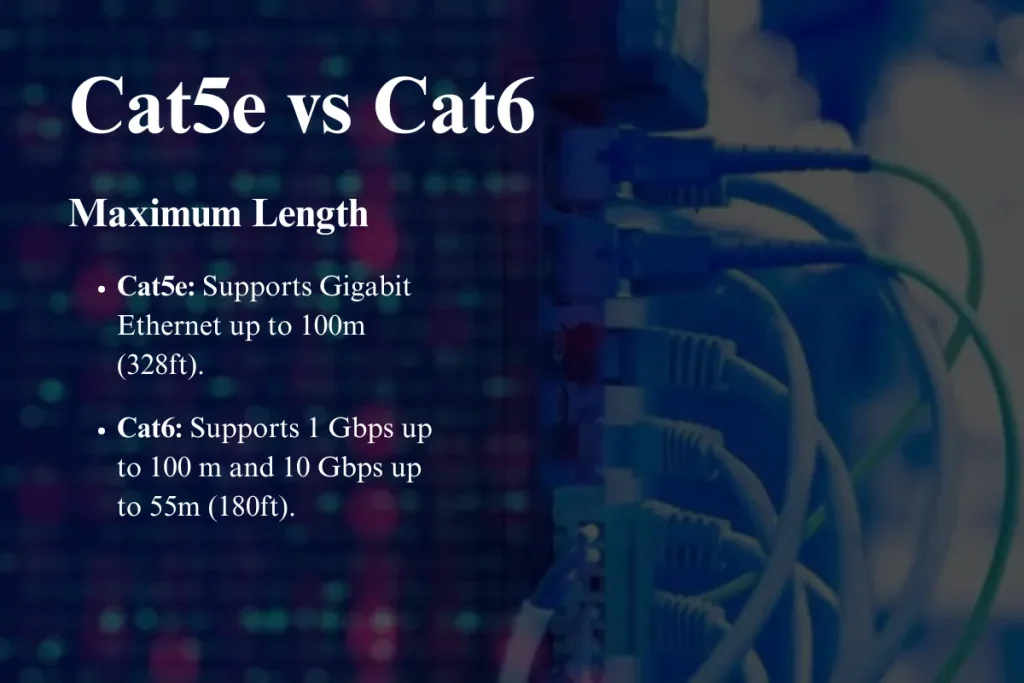
Cat 5e vs Cat 6: Visual Differences
Cat 5e vs Cat 6 cables have distinct physical differences. Cat5e cables are generally thinner and more flexible, making them easier to handle and install. They have fewer twists per inch compared to Cat6, which contributes to their reduced crosstalk resistance.
Cat 6 cables, on the other hand, are thicker and have a more rigid construction due to their tighter twists and enhanced shielding. This makes them slightly more challenging to install but provides better protection against interference and crosstalk. The thicker insulation also contributes to the cable’s higher performance and reliability.
Maximum Cable Length
The maximum length for Cat5e cables is 100 meters (328 feet), which is adequate for most home and small office networks. This length supports Gigabit Ethernet speeds without any significant loss of performance.
Cat 6 cables can also be used up to 100 meters for standard 1 Gigabit Ethernet applications. However, for 10 Gigabit Ethernet speeds, the maximum length is reduced to 55 meters (180 feet). Adhering to these length limitations is crucial for maintaining optimal network performance and avoiding signal degradation.
How Cable Quality and Installation Affect Real-World Network Performance
While specifications like Cat5e speed, Cat6 speed, and max length are important on paper, real-world performance often depends on cable quality and installation practices.
Even a high-end Cat6 cable can underperform if the Ethernet cable is poorly manufactured or improperly installed. Understanding these factors helps you get the most out of your network, whether using a 5 cable, Cat5e Ethernet cable, or Cat6 cable.
Why Cable Quality Matters
Not all cables are created equal. Variations in wire gauge, shielding, and twist precision can influence Ethernet cable speed, transfer speed, and throughput. For example:
- Low-quality Cat5e cables may fail to achieve their rated Cat5e max speed of 1 Gbps.
- Cat6 cables with substandard shielding can reduce Cat6 cable speed, especially in environments with electrical interference.
- Premium cables, including Cat6e or Cat6a, maintain high speed ratings even over longer distances, closer to their max length specifications.
Manufacturers often produce Cat5e, Cat6, or Cat6a cables with slightly different materials, so even cables of the same category can have varied real-world speeds. Checking Ethernet cable specs and wire gauge ensures you get consistent cable speeds.
Impact of Installation on Network Performance
Proper installation is just as important as cable choice. Common issues that affect speed, max length, and data reliability include:
- Sharp bends or kinks: Twisted pairs in Cat5e or Cat6 cables can lose signal integrity if bent excessively.
- Improper termination: Using mismatched Cat5 cat6 connectors can reduce the effective Cat5e cable speed or Cat6 transfer speed.
- Long cable runs: Exceeding Cat5e distance limit (100 meters) or Cat6 max length (55 meters for 10GbE) can cause performance drops.
- Environmental interference: Fluorescent lights, power lines, and other electrical devices can affect Ethernet speeds, particularly in unshielded UTP cables.
Even high-end cables can underperform if these installation rules are ignored, which is why real-world testing of Ethernet cable speed is recommended after installation.
Testing and Troubleshooting Your Ethernet Cable
Knowing how to test your Cat5e Ethernet cable speed, Cat6 cable speed, or even a generic 5 cable speed helps ensure that your network performs as expected. Tools and tips include:
- Using network testing software to measure throughput and detect Cat5e vs Cat6 differences in real-life conditions.
- Checking each cable run for adherence to Cat5e max length and Cat6 max length.
- Inspecting connectors and terminations, especially when using Cat5 cat6 cables for mixed installations.
- Comparing your Ethernet cable speeds against manufacturer ratings to identify degraded or low-quality cables.
Practical Advice for Optimal Performance
- Always use cables from reputable manufacturers with clearly stated Cat5e speed ratings or Cat6 max speed.
- Plan cable routes carefully to avoid excessive bends and interference.
- Use the correct connector type: Cat5e, Cat6, Cat6a connectors matter for maintaining top speeds.
- Avoid exceeding distance limits for Cat5e and Cat6; for high-demand networks, consider Cat6e or Cat6a.
- Test your Ethernet cable after installation to ensure actual transfer speed meets expectations.
By focusing on both cable quality and installation practices, you can achieve reliable Ethernet speeds, prevent signal degradation, and make the most of your Cat5e, Cat6, or 5 cable network setup. This approach ensures your network performs at its rated capacity and remains stable under real-world conditions.
Cost and Availability
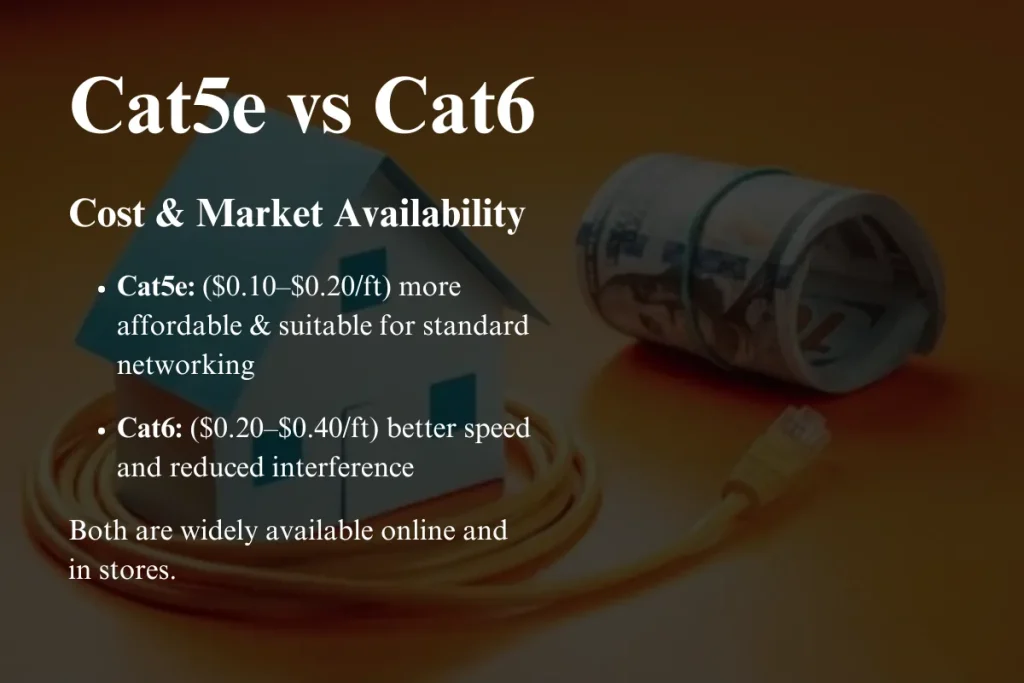
Price Comparison
Cat5e cables are generally more affordable than Cat 6 cables, making them a popular choice for budget-conscious users. They offer a cost-effective solution for standard networking needs and are widely available in various lengths and specifications. The lower price of Cat5e cables makes them an attractive option for home networks and small businesses that do not require the highest performance levels.
Cat 6 cables, while more expensive, provide better performance and future-proofing benefits. The higher cost is justified by the improved speed, bandwidth, and crosstalk resistance. Investing in Cat 6 cables can be a wise decision for users who require faster and more reliable connections, especially in environments with high data demands. However, the increased price may be a consideration for those on a tight budget.
Market Availability
Both Cat5e and Cat 6 cables are widely available on the market. They can be easily found in electronics stores, online retailers, and specialized networking equipment suppliers. It’s important to choose high-quality cables from reputable manufacturers to ensure optimal performance and longevity.
When purchasing Ethernet or LAN cables, consider factors such as the length, shielding, and connector type to match your specific networking needs.
Installation and Compatibility

Ease of Installation
Cat5e cables are generally easier to install due to their thinner and more flexible construction. This flexibility makes Cat5e cables more manageable, especially in tight spaces and complex network setups. They are also easier to terminate with standard RJ45 connectors or plugs, making them a popular choice for DIY installations in homes and small offices.
Cat 6 cables, while offering better performance, can be more challenging to install. Their thicker construction and tighter twists require careful handling to avoid damaging the cable. Proper installation techniques are crucial to maintaining the cable’s performance and ensuring reliable data transmission. It’s often recommended to have Cat 6 cables installed by professionals, especially in large or complex network environments.
Compatibility with Existing Hardware
Both Cat 5e vs Cat 6 cables are compatible with standard RJ45 connectors and can be used with most networking devices, including routers, switches, and network interface cards. Cat5e cables can seamlessly integrate into existing Cat5 and Cat5e networks without any compatibility issues.
Upgrading to Cat 6 cables may require ensuring that the existing network hardware can support the higher speeds and bandwidth offered by Cat6. While most modern devices are compatible with Cat 6 cables, it’s essential to verify the specifications of older equipment to avoid potential compatibility issues.
Applications and Use Cases

Home Networks
For most home networks, Cat5e cables are sufficient for standard internet browsing, streaming, and online gaming. The performance of Cat5e cables meets the requirements of typical household activities, ensuring stable and reliable connections.
Their affordability and ease of installation make them a popular choice for home users who need a cost-effective solution for their networking needs.
Cat 6 cables, however, are recommended for users who require faster and more stable internet connections for tasks such as 4K video streaming, large file transfers, and online gaming.
The higher bandwidth and speed capabilities of Cat 6 cables provide a significant performance boost, making them ideal for homes with multiple devices and high data demands. Investing in Cat 6 cables can future-proof your home network and accommodate increasing internet speeds.
Office and Industrial Networks
In office and industrial environments, the performance and reliability of the network are critical. Cat5e cables can handle standard office applications such as email, web browsing, and file sharing, making them suitable for small to medium-sized businesses. Their lower cost and ease of installation make them a practical choice for office networks that do not require the highest performance levels.
Cat 6 cables, on the other hand, are preferred for larger office networks and industrial applications that demand high-speed and stable connections. Daisy chaining network devices can help expand your network efficiently, particularly when using Cat 5e vs Cat 6 cables.
The reduced crosstalk and higher bandwidth of Ca t6 cables ensure reliable data transmission, even in environments with high levels of electromagnetic interference. Cat 6 cables are ideal for data centers, large corporate networks, and industrial settings where performance and reliability are paramount.
Large-scale enterprise networks and cloud infrastructures, such as those operated by hyperscalers, demand high-speed, low-latency connections. Using Cat6 or Cat6a cables ensures that these massive networks maintain consistent performance and data throughput.
Environmental Considerations and Sustainability

Cat 5e vs Cat 6: Environmental Impact
The production and disposal of Ethernet cables have an environmental impact. Cat5e cables, being older technology, may contain materials that are less environmentally friendly compared to newer cables. Recycling and proper disposal of Cat5e cables can help mitigate their environmental footprint.
Cat 6 cables are designed with more modern materials and manufacturing processes that are often more environmentally conscious. These cables may have a lower environmental impact during production and disposal. Choosing Cat 6 cables can contribute to a more sustainable network setup, especially if environmental considerations are a priority.
Sustainability Initiatives
Many manufacturers are now focusing on sustainability and eco-friendly practices in the production of Ethernet cables. Look for brands that prioritize using recycled materials, reducing waste, and minimizing the carbon footprint of their products.
Supporting companies with strong sustainability initiatives can help promote a more environmentally responsible industry.
Future-Proofing and Longevity

Durability
Cat 6 cables are built with stricter specifications and higher-quality materials, making them more durable and resistant to wear and tear compared to Cat5e cables. The enhanced construction of Cat 6 cables includes thicker insulation and better shielding, which provides greater protection against physical damage and environmental factors. This increased durability ensures a longer lifespan for Cat 6 cables, making them a more robust choice for high-performance networks.
Cat5e cables, while still reliable, may not offer the same level of durability as Cat 6 cables. They are suitable for standard networking tasks and provide a cost-effective solution for home and small office networks. However, in environments with higher demands and potential for physical damage, Cat 6 cables may be a more suitable option.
Future-Proofing Considerations
Future-proofing your network involves selecting cabling that can accommodate increasing data demands and evolving technology. Cat 5e vs Cat 6 cables are sufficient for current networking needs, while Cat 6 cables offer better future-proofing due to their higher performance capabilities. Cat 6 cables can support higher speeds and bandwidth, making them ideal for networks that anticipate growth and increased data traffic.
Investing in Cat 6 cables can provide long-term benefits, especially as internet speeds and bandwidth requirements continue to rise. By choosing Cat 6 cables, you ensure that your network can handle future advancements in technology and maintain optimal performance for years to come.
Emerging Technologies and Future Trends
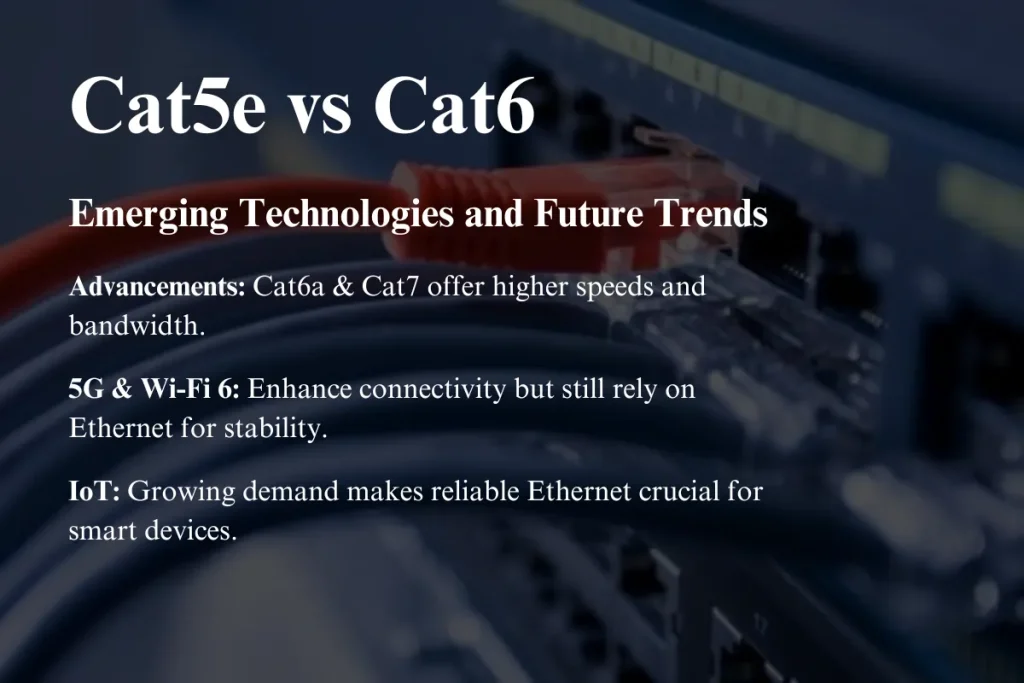
Advancements in Cable Technology
As technology continues to evolve, so do Ethernet cables. Newer categories, such as Cat6a and Cat7, are being developed to support even higher speeds and greater bandwidths.
These advancements are pushing the boundaries of network performance and enabling faster, more reliable data transmission. Keeping an eye on these emerging technologies can help users stay ahead of the curve and make informed decisions about future network upgrades.
The Impact of 5G and Wi-Fi 6
The introduction of 5G and Wi-Fi 6 is revolutionizing the way we connect to the internet. These technologies offer faster speeds, lower latency, and increased capacity, which can complement wired networks. Understanding how these wireless advancements interact with Ethernet cabling can help users create more efficient and versatile network setups.
The Role of IoT (Internet of Things)
The growing presence of IoT devices in homes and businesses is increasing the demand for robust and reliable networks. Ethernet cables like Cat 5e vs Cat 6 play a crucial role in connecting IoT devices, ensuring stable and secure data transmission. As the number of IoT devices continues to rise, selecting the right Ethernet cable becomes even more critical.
Advanced networking setups, especially in data centers or high-performance workstations, often rely on compatible hardware like GPUs for efficient processing and rendering, which can benefit from optimized Ethernet speeds and reliable Cat6 cabling.
Conclusion
Choosing between Cat5e and Cat6 depends on your specific networking needs. Cat5e is cost-effective and sufficient for standard tasks, while Cat6 offers superior performance and future-proofing for high-speed applications.
By understanding the key differences between Cat 5e vs Cat 6, you can make an informed decision that ensures a reliable and efficient network setup.
FAQs
Is Cat5e good enough for 4K?
Yes, Cat5e is good enough for 4K streaming. It supports speeds up to 1 Gbps, which is sufficient for 4K video streaming, online gaming, and other standard applications. However, if you have multiple devices streaming simultaneously, Cat6 may offer better performance.
Do I really need Cat6 cable?
Whether you need a Cat6 cable depends on your specific networking requirements. If you need higher speeds, reduced crosstalk, and better future-proofing for high-performance applications, Cat6 is the better choice. For standard home or small office networks, Cat5e may be sufficient.
Should I install Cat5e or Cat6 in my house?
Yes, you can install both cat5e vs cat6 in your house. If your current network demands are moderate, Cat5e will suffice for typical tasks like Internet browsing and streaming. However, if you anticipate higher data demands or want to future-proof your network, installing Cat6 cables can provide better performance and longevity.
Can Cat5e support Gigabit Ethernet?
Yes, Cat5e can support Gigabit Ethernet speeds of up to 1 Gbps. It is suitable for most standard applications and provides reliable performance for home and small office networks.
Is Cat5e being phased out?
While Cat5e is still widely used and sufficient for many applications, newer categories like Cat6, Cat6a, and Cat7 are becoming more popular due to their higher performance capabilities. Cat5e is not necessarily being phased out, but users seeking better performance and future-proofing might opt for newer cable types.

